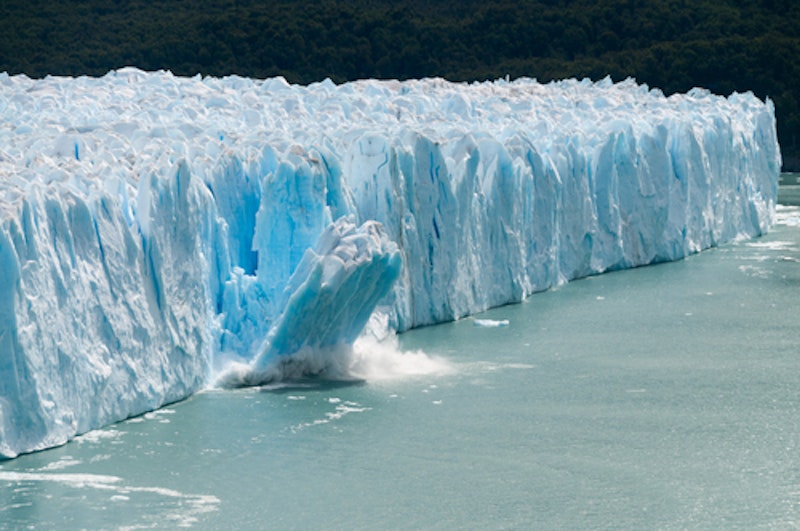Study Notes
GCSE Geography | What is the Evidence for Climate Change? (Climate Change 2)
- Level:
- GCSE
- Board:
- AQA, Edexcel, OCR, Eduqas
Last updated 17 Oct 2024
How can we prove that there has been a long-term change in global temperatures?
Recent evidence
More recently we have used thermometers to monitor these changes in temperature. However there is other evidence that shows climate change is occurring.
Firstly, we can see how much glaciers are shrinking and ice is melting due to ocean temperatures warming – images like the one below are common, with huge chunks of icebergs and ice shelves becoming loose and falling into the oceans. Scientific estimates claim that some glaciers may completely disappear over the next decade, and measurements show that Arctic sea ice has thinned by 65% since 1975, and is now at an all time low. Data from NASA also shows that since 2002 Antarctica is losing 134 billion tonnes of ice a year, and Greenland is losing 287 billion tonnes annually.
Secondly, we can see that the average global sea level has risen between 10 and 20cm in the past 100 years. This has happened because when glaciers and ice caps melt excess water flows into the sea, but also because of thermal expansion – when ocean water is heated and expands in volume.
Thirdly, scientists have observed that the timing of seasonal activities, such as birds migration and plants flowering, has started to happen earlier in the year.

Historical evidence
To investigate historic climate change we are reliant on natural recorders such as tree rings, fossil pollen, ice cores and ocean sediments, to estimate what the climate was like - however these only show us that the climate has changed, they don't give us evidence of actual temperature change.
Ice cores
Because Antarctica is an unspoilt wilderness the layers of ice and snow have remained unchanged - different layers of snow build up over thousands of years which gives us information about how the climate has changed. Scientists can drill ice cores to see what the climate was like when the snow fell - the further they drill down, the older the snow will be - they have managed to get as far back as 800,000 years. Scientists use the oxygen isotopes within the ice cores to estimate what the temperatures would have been. They then melt the ice core to release trapped carbon dioxide and methane, which they can compare to present levels to investigate climate differences between then and now.

Ocean sediments
Scientists can also observe ocean sediment - the further they dig down, the older the sediment will be. Organisms and plankton remains provide evidence of climate change, such as past surface water temperatures, and levels of oxygen and nutrients.
You might also like

Climate Change and the Safest Place on Earth
14th January 2016

How Satellite Images Expose Our Global Footprint
30th August 2017

The race to understand Antarctica
30th March 2018
Will Joe Biden do a turnaround on USA's climate policy?
10th November 2020
Antarctica as a Global Common - A-Level MCQ Quiz
Quizzes & Activities

COP28 Teaching Activities: Three Carbon News Stories and How to Use Them
14th November 2023
